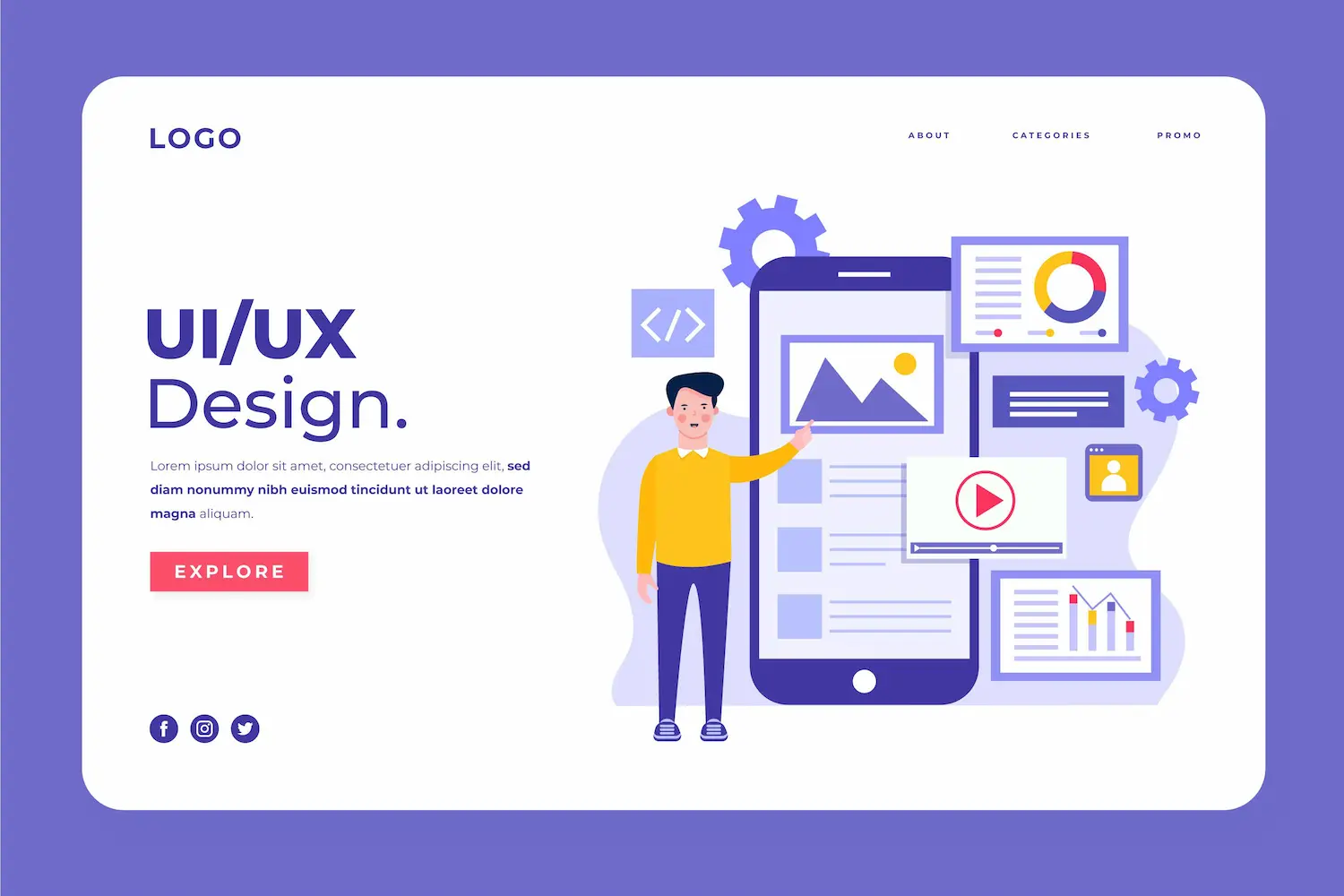Decades of UI/UX Design: What Has Changed?
Over the past two decades, UI/UX design has transformed from an afterthought to a business necessity. In the early 2000s, most websites were built with minimal consideration for usability. Companies prioritized flashy graphics and rigid layouts, often at the expense of functionality. Users struggled with poor navigation, slow-loading pages, and inaccessible content, leading to frustration and high bounce rates.
Fast forward to today, and UI/UX design is at the heart of digital success. Businesses now recognize that user experience directly impacts engagement, conversion rates, and brand perception. Advances in technology, combined with a deeper understanding of user behavior, have reshaped how companies approach design. Mobile-first experiences, responsive layouts, and accessibility considerations are now essential. The key lesson? A well-designed interface isn’t just about aesthetics—it must be functional, inclusive, and optimized for user needs.
The Shift from Aesthetics to Usability
In the early days of the internet, web design was often driven by aesthetics rather than usability. Flash animations, elaborate menus, and excessive text cluttered screens, making navigation a challenge. Designers focused on creating visually impressive layouts, sometimes at the expense of user experience. As a result, many websites felt overwhelming, causing users to leave before completing their intended actions.
Today, usability takes precedence. Minimalist design, clear navigation structures, and intuitive interactions help users find information quickly and complete tasks efficiently. Businesses now understand that a simple, well-organized interface enhances user satisfaction and retention. Clean layouts, concise content, and strategic use of white space guide users effortlessly through a website. The goal is to reduce friction, ensuring that visitors can achieve their objectives with minimal effort. Companies that fail to prioritize usability risk losing potential customers to competitors with more user-friendly interfaces.
Why Accessibility is Non-Negotiable
Accessibility in UI/UX design has gone from being an optional consideration to a critical requirement. In the past, many businesses overlooked accessibility, assuming it only impacted a small percentage of users. However, with over a billion people worldwide experiencing some form of disability, inclusive design is no longer a luxury—it’s a necessity.
Websites must be designed to accommodate users with visual, auditory, motor, and cognitive impairments. This means implementing features such as keyboard navigation, alt text for images, and screen reader compatibility. Beyond being a moral obligation, accessibility compliance is also a legal requirement in many regions. The Americans with Disabilities Act (ADA) and Web Content Accessibility Guidelines (WCAG) set the standards for digital inclusivity.
From a business perspective, prioritizing accessibility broadens a company’s audience and enhances its brand reputation. A website that is accessible to all users, regardless of ability, fosters trust and inclusivity. Additionally, search engines favor accessible websites, leading to improved SEO rankings. Companies that invest in accessibility now are not only future-proofing their digital presence but also creating a better experience for all users.
How Data-Driven Design Leads to Success
UI/UX design is no longer based on assumptions—it’s driven by data. In the past, designers made decisions based on personal preferences or industry trends, often without testing their effectiveness. This trial-and-error approach led to inconsistent user experiences and missed opportunities for improvement.
Today, businesses leverage user data to make informed design choices. Tools such as heatmaps, A/B testing, and session recordings provide valuable insights into user behavior. By analyzing how visitors interact with a website, companies can identify pain points and optimize their design accordingly.
For example, if heatmap data shows that users frequently abandon a checkout page at a specific step, designers can investigate and resolve potential issues—whether it’s a confusing form field or unexpected extra fees. A/B testing allows businesses to compare different design variations and determine which performs better. This continuous optimization ensures that every design decision is backed by real user behavior rather than guesswork.
Data-driven design leads to higher conversion rates, lower bounce rates, and improved customer satisfaction. Businesses that embrace this approach stay ahead of the competition by creating experiences that are tailored to their audience’s needs.
The Future of UI/UX: Continuous Improvement
One of the biggest lessons from 20+ years in UI/UX design is that the work is never done. The digital landscape constantly evolves, and user expectations shift over time. What works today may become outdated tomorrow. Successful businesses understand that UI/UX is an ongoing process that requires regular updates and refinements.
To stay competitive, companies must continually gather user feedback, analyze performance metrics, and adapt their designs. Regular usability testing ensures that new features enhance rather than hinder the user experience. Additionally, staying informed about emerging design trends—such as voice interfaces, AI-driven personalization, and immersive experiences—helps businesses remain innovative.
Investing in UI/UX design isn’t just about improving a website; it’s about creating a seamless experience that builds long-term customer loyalty. Companies that commit to continuous improvement will see lasting benefits, from increased engagement to higher revenue. The key takeaway? Never settle for “good enough”—always look for ways to make the user experience better.
Final Thoughts
UI/UX design has come a long way over the past two decades, evolving from a secondary concern to a critical business strategy. Companies that understand the importance of usability, accessibility, and data-driven decision-making are better positioned for success. By continuously improving their digital experiences, businesses can foster stronger customer relationships, increase conversions, and stand out in an increasingly competitive market.
If your website isn’t performing as well as it should, it may be time to rethink your UI/UX strategy. A user-friendly, accessible, and data-backed design can transform your online presence and drive real results.





